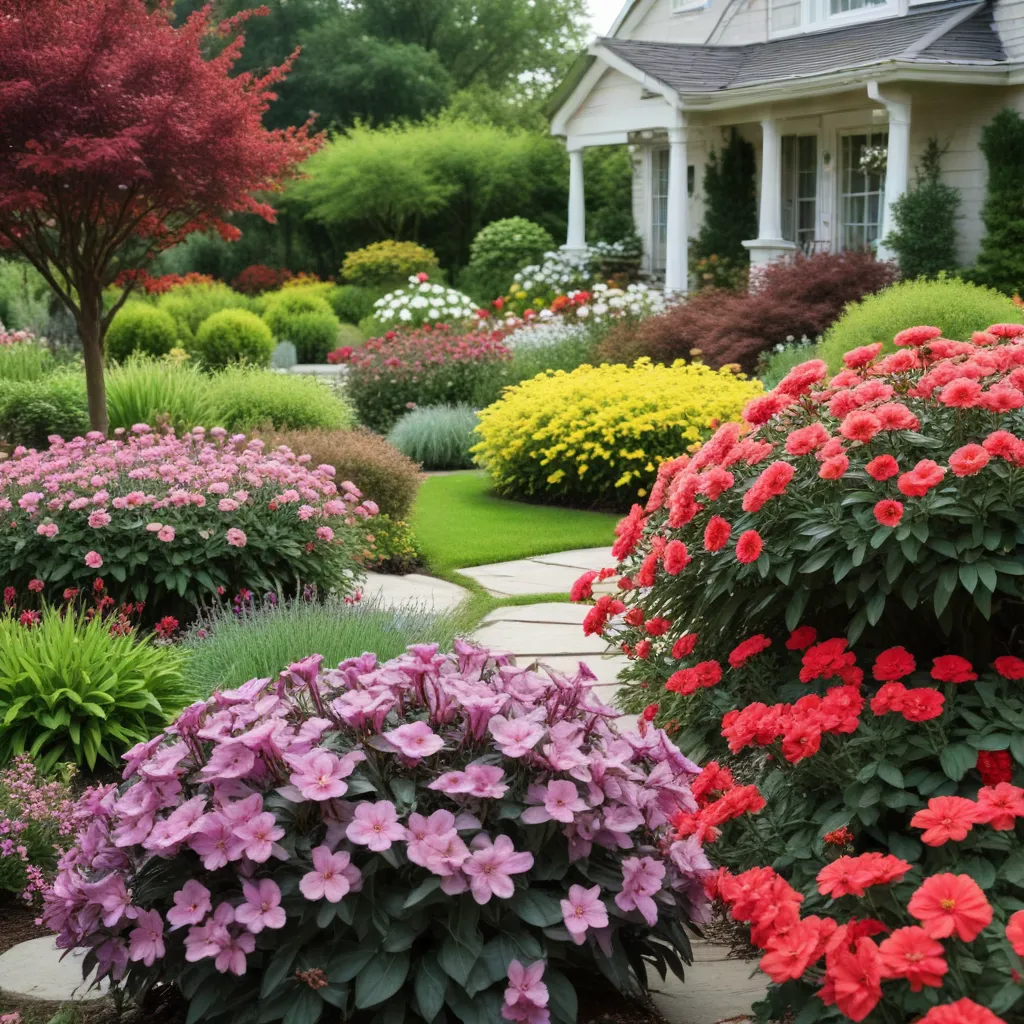
As a hospitality and wine expert for the Wine Garden Inn, I’m excited to share a wealth of insights on cultivating a vibrant, visually captivating garden that will delight your senses all season long. From harnessing the power of annuals and perennials to mastering seasonal maintenance, these time-tested techniques will transform your outdoor oasis into a true horticultural showstopper.
Seasonal Gardening Principles
Seasonality and Plant Selection
The key to a stunning garden begins with understanding your climate and selecting the right plants for each season. In our northern climate, I’ve found that a blend of spring ephemerals, bold summer annuals, and resilient perennials allows me to craft a garden that is constantly evolving and ablaze with color.
Early spring is the perfect time to add a pop of life with bulbs like cheerful daffodils and delicate snowdrops. As the days grow longer, I transition to a riot of annuals – cosmos, zinnias, and marigolds to name a few – that provide nonstop blooms until the first frost. Weaving in perennials like irises, peonies, and daylilies ensures a lush, ever-changing tapestry that carries me through the heart of the season.
Soil Preparation and Amendments
Of course, the foundation of any thriving garden lies in the soil. I make it a point to amend my beds annually with a generous layer of compost or well-rotted manure. This not only enriches the soil acidity and fertility, but also helps to suppress weeds and retain moisture – a lifesaver during the hot, dry summers we often experience.
Planting Techniques
When it comes time to add new plants to my borders, I’m mindful to give each one ample space to stretch its roots and spread its foliage. I’ve learned the hard way that overcrowding leads to stunted growth and increased susceptibility to pests and diseases. By spacing my plants appropriately and avoiding the temptation to cram in “just one more,” I create a harmonious, breathable garden composition.
Visual Garden Design
Color Harmony and Contrast
Color is the language of the garden, and I delight in crafting vibrant palettes that captivate the eye. I often turn to the color wheel for inspiration, pairing complementary hues like the fiery oranges and deep purples of my ‘Henry’s Red’ rhododendron and ‘Purple Dome’ aster. Conversely, monochromatic schemes of soft pastels or rich, jewel-toned blooms create a sense of serene cohesion.
Texture and Form
Equally important to color is the interplay of texture and form. I love to juxtapose the delicate, feathery fronds of Japanese painted fern against the bold, architectural leaves of ligularia or hostas. The showy, rounded peonies in my border provide a lush counterpoint to the spiky, vertical inflorescences of miscanthus grasses.
Arrangement and Layout
When planning my garden’s layout, I strive for a sense of natural flow and balance. I prefer to group plants in drifts and masses rather than dispersing them individually. This creates a more impactful, cohesive display. I also make a conscious effort to vary the heights of my plantings, positioning taller specimens at the back and cascading lower-growing varieties toward the front for maximum visual interest.
Garden Maintenance Strategies
Watering and Irrigation
Proper watering is crucial for the health and vigor of my garden, especially during the heat of summer. I find that deep, infrequent watering encourages robust root systems that are better equipped to withstand drought. I also rely on a drip irrigation system to deliver water precisely where it’s needed, minimizing waste and disease issues.
Pruning and Deadheading
Regular pruning and deadheading help to keep my plants looking their best all season long. I meticulously remove spent blooms from my daylilies, irises, and peonies to promote continued flowering. Judiciously trimming back leggy or overgrown shrubs and perennials also encourages bushier growth and prevents the garden from becoming overcrowded.
Pest Management and Organic Solutions
As an avid proponent of sustainable gardening, I strive to manage pests and diseases through organic means whenever possible. I rely on beneficial insects like ladybugs and lacewings to keep aphid populations in check, and I’ve found that a simple solution of horticultural oil or insecticidal soap effectively deters whiteflies and spider mites without harming the environment.
Blooming Brilliance
Vibrant Annuals and Biennials
Annuals are the unsung heroes of my garden, providing a burst of vibrant color from spring through fall. I love incorporating bold zinnias, delicate cosmos, and fragrant nicotiana to fill in gaps and add visual punch. Biennials like foxgloves and hollyhocks also make a stunning appearance, their towering spikes adding architectural interest.
Captivating Perennials
While annuals offer an ever-changing canvas, I rely on the steadfast performance of perennials to anchor my garden design. Resilient irises, daylilies, and peonies provide a reliable show year after year, their blooms complemented by the lush, variegated foliage of hostas and the dramatic, architectural silhouettes of ligularia.
Flowering Shrubs and Trees
No garden is complete without the structural and seasonal interest of flowering shrubs and trees. I delight in the springtime display of my ‘Crimson Queen’ Japanese maple, its fiery leaves a stunning backdrop for the delicate white blossoms of my Anacacho orchid tree. In autumn, the vivid red berries of my winterberry holly provide a vibrant counterpoint to the golden foliage of my ‘Karl Foerster’ feather reed grass.
By embracing the cyclical nature of the seasons and designing with an eye toward color, texture, and form, I’ve cultivated a garden that is a true feast for the senses. Whether you’re an experienced green thumb or a passionate novice, I hope these insights will inspire you to achieve your own “bloom with brilliance” at the Wine Garden Inn. Happy gardening!
